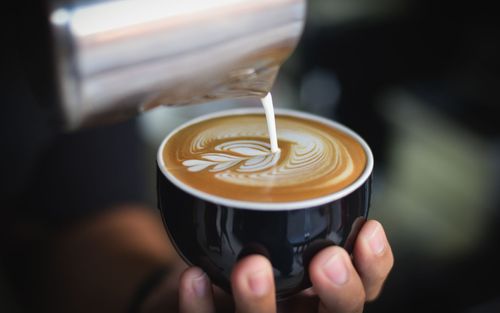Millions of people daily enjoy the cherished beverage known as coffee around the globe. But where did this well-known beverage originate from, and how did it change over time? The history of coffee may be traced to ancient Ethiopia, where it is said that a goat herder by the name of Kaldi discovered its benefits after seeing that his goats were more spirited after consuming the plant’s scarlet berries.
Coffee was grown and traded on the Arabian Peninsula after it was first used in Ethiopia.1 The first coffee shops and the methods for roasting and brewing it were developed in the Arab area. These early coffee shops acted as gathering places for people to talk and have fun. As coffee gained popularity, it travelled to other continents, including Europe, where some governments first viewed it with distrust and even outlawed it. Despite these difficulties, coffee remained popular and eventually spread to several cultures all over the world.2
There are innumerable coffee varieties available today, each with an own flavour profile and manner of brewing. We’ll look at some of the most well-liked coffee varieties from around the world in this article.

Espresso: A Bold, Strong Classic
Espresso is a special kind of coffee that is produced by applying high pressure to a little amount of hot water that has been finely ground. A concentrated shot of coffee is produced as a result of this technique, and it has a rich, robust flavour with crema on top. Espresso is frequently used as the foundation for various coffee beverages including cappuccinos, lattes, and mochas, which are prepared by combining the espresso shot with steamed milk and other ingredients. This drink is brewed with a particular roast known as Italian roast, which is one of its distinctive qualities. This roast is distinguished by its dark hue and powerful, robust flavour, which is ideal for the vigourous brewing procedure used to make espresso.
The Ideal Combination of Espresso and Milk is a Cappuccino.
Espresso, steamed milk, and milk foam are all combined in equal amounts to create the coffee beverage known as a cappuccino. The end product is a creamy, frothy beverage with a flavour that is neither overpoweringly strong nor too sweet.
The cappuccino’s roots can be found in Italy, where it is a well-liked breakfast beverage. The Capuchin order of friars, whose hooded robes were thought to mirror the colour of the beverage, is where the word “cappuccino” originates. The milk froth, which is created by heating milk until it is thick and creamy, is one of a cappuccino’s distinguishing characteristics. Then, a spoonful of milk foam is placed on top of the espresso shot to create a distinct layer of film on top.
Latte: A Creamy, Smooth Treat
Espresso is combined with a substantial amount of steamed milk and a little amount of milk foam to create the coffee beverage known as a latte.3The outcome is a velvety-textured, mildly flavoured beverage that is smooth and creamy. Lattes are renowned for their mild, milk-forward flavour, in contrast to cappuccinos, which have a more well-balanced flavour. Because of this, people who want a milder cup of coffee frequently choose them. Many flavour syrups and toppings, like caramel, chocolate, and whipped cream, are frequently placed on top of lattes to give them a richer, decadent taste.
Mocha: A Latte with a Chocolatey Twist
A coffee beverage with chocolate and coffee flavours is called a mocha. A rich, creamy beverage with a chocolaty flavour is produced by adding chocolate syrup or cocoa powder to a latte. For an extra luxurious touch, mochas are frequently served with whipped cream on top and a dusting of chocolate shavings. They are a well-liked option for people who prefer a latte’s creamy consistency with a bit of chocolate flavour.
Pour Over: A Carefully Crafted, Slow Process
Pour over coffee is a brewing technique whereby hot water is gradually poured over ground coffee beans that are housed in a cone-shaped filter. The end product has a cleaner, brighter flavour profile than coffee produced using other techniques. Pour over coffee is distinctive in that it is normally prepared by hand using a small, manual appliance. By giving the barista entire control over the brewing procedure, a handcrafted, artisanal product is produced. Specialty, single-origin coffee beans, which have a distinctive flavour profile and are farmed in particular areas of the world, are frequently coupled with pour over coffee.4
The Coffee World is Big and Diverse.
As you can see, there are innumerable varieties of coffee available to fit a wide range of tastes and preferences, making the world of coffee both huge and diverse. There is a coffee beverage out there for everyone, from strong, intense espresso to slender, creamy lattes.
There are countless possibilities, whether you prefer your coffee mild and sweet or strong and bold. So why not discover your new favourite coffee by exploring the world of coffee?
Reference:

Leave a Reply